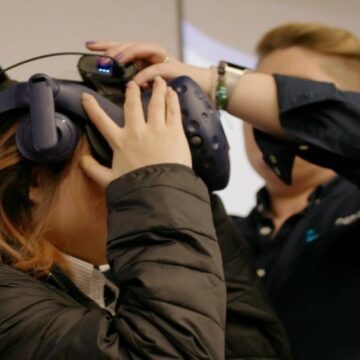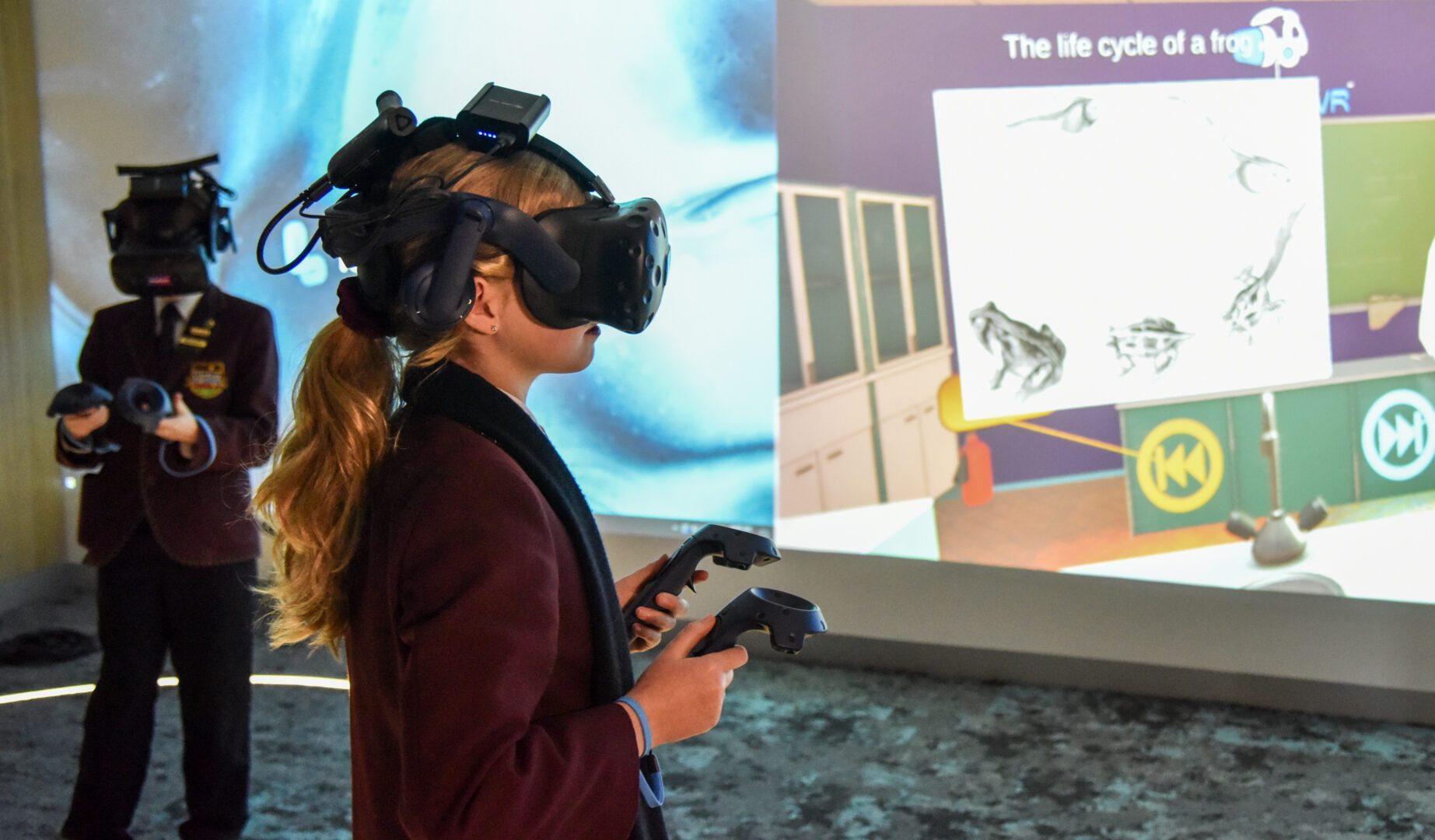Improving collaboration in the classroom
Why do we need virtual reality in the classroom? First, we should look to the workplace.
Adelaide Botanic High School (ABHS) Principal Alistair Brown noted the changing landscape of the workforce piqued his interest in a Lumination Learning Lab.
“One of the reasons for wanting a Lumination Learning Lab was that we were really starting to see immersive technologies featured in the world of work.”
According to McKinsey, immersive-reality technologies are one of the key trends for business leaders, with adoption taking place across industries. From transforming health and safety to enhancing healthcare, students need to be prepared to enter a rapidly changing workforce.
Not only is this style of learning preparing students for the jobs of the future, but collaboration, engagement and critical thinking are on the rise at ABHS.
Immersive environments encouraging collaboration
The benefits of immersive virtual reality (VR) and augmented reality (AR) in the classroom are endless, but increasing collaboration stands out as a major win.
“I found the students were super engaged — collaboration between the students assisting each other,” says Jim De Gregorio, a teacher at ABHS. “One team started, the next team built on and the next team finished.”
More closely aligned to what you might find in a modern office, students work together using virtual and augmented reality to solve real world problems. The Lab encourages station-based learning, with one group using VR, another focusing on research and the third using AR technology to map out designs.
The learning station method, also known as station-based learning, enables small groups of students to move through learning centres, or stations.
This method allows teachers to modify instruction, incorporating students’ needs, interests and learning styles. In a recent research study, this method was shown to enhance teaching quality and boost student activeness, independence and creativity.

Teachers getting comfortable using tech
After their initial session with Lumination’s Education team — inclusive of teachers who have just stepped out of the classroom — the staff at ABHS felt they were better prepared to reap the benefits of VR in education and add an immersive element into their lesson plans.
“After speaking with a few of the teachers who have seen the incursion, they felt much more comfortable about what that station-based learning looks like,” says Sylvia Saard, STEM teacher at ABHS.
With access to Lumination’s Learning Management System, including resources and lesson plans, as well as 12 month support from the Education team, the staff is eager to get started. Some are already getting comfortable, and the students are taking note.
“The teachers at our school really help motivate us and push this as an option,” says Year 9 student, Lily. “I really like it. I think it’s such a great thing to have in the school and there’s so many different things you can do with it.”

Students taking an active role
In this interactive, experiential learning environment, students are invited to take an active role in their education.
“They’re challenging us even to think about ‘how this is going to support my learning,’ rather than just being something fun to do,” says Saard.
Primary and secondary students are increasingly skilled at using technology and feel a sense of empowerment showcasing these skills in the classroom. As a teacher, you don’t have to be a technological expert to facilitate effective immersive learning experiences.
By offering VR and AR technologies in the classroom, students learn the benefits of VR in education, how to use their devices for educational purposes and build confidence in their ability to operate the technology. This improves their critical thinking and allows them to see the world in a new light.
“There are so many possibilities with this technology, it’s pretty much endless,” says Kieran, a Year 10 student. “There are many ways you can use it to help kids, teachers, everyone see through a different lens.”
Taking the first mover advantage
ABHS is leading the way, showcasing the impact immersive learning can have on learning outcomes and the benefits of VR in education.
“The students have the opportunity to engage in something in real time. They don’t have to wait. They’re actually seeing what they’re doing come to fruition right in front of their eyes,” says De Gregorio.
To sustain the workforce of the future, Australia — and the world — need skilled employees. It needs first movers. It needs educational leaders like ABHS.
“I think it’s cool being at the start of it,” says Saard. “You know, we get the hang of it early and we get more familiar with the space. I just think it will be really valuable.”
Explore the new Lab at Goolwa Secondary College or learn more about Lumination Learning Labs.




